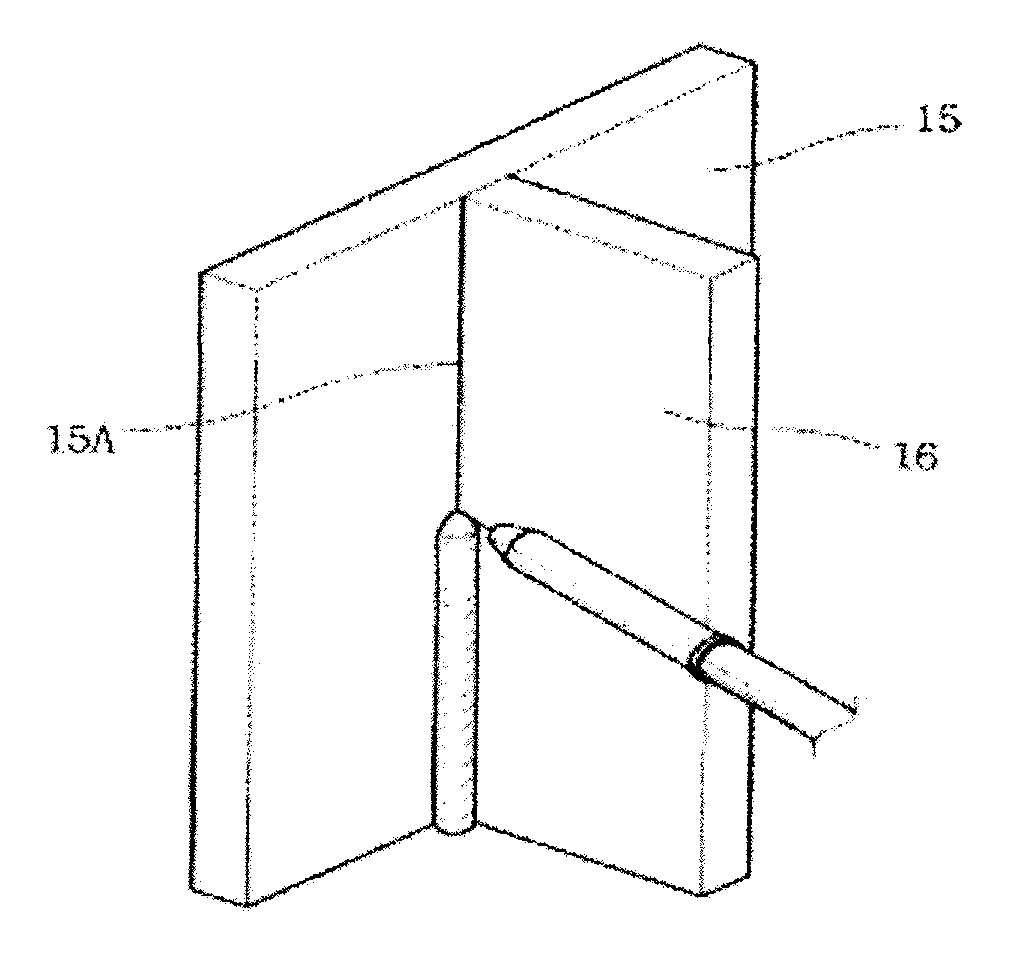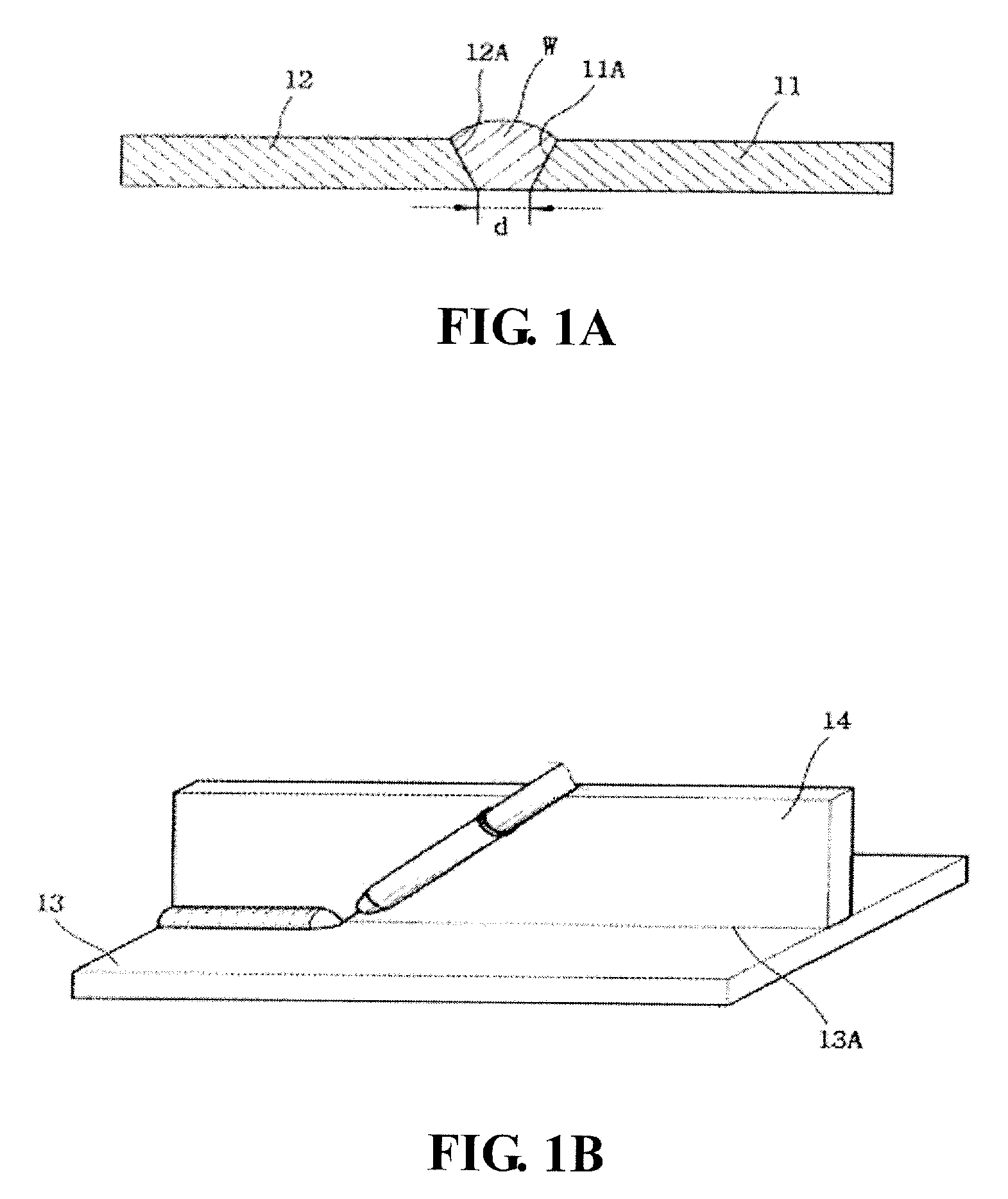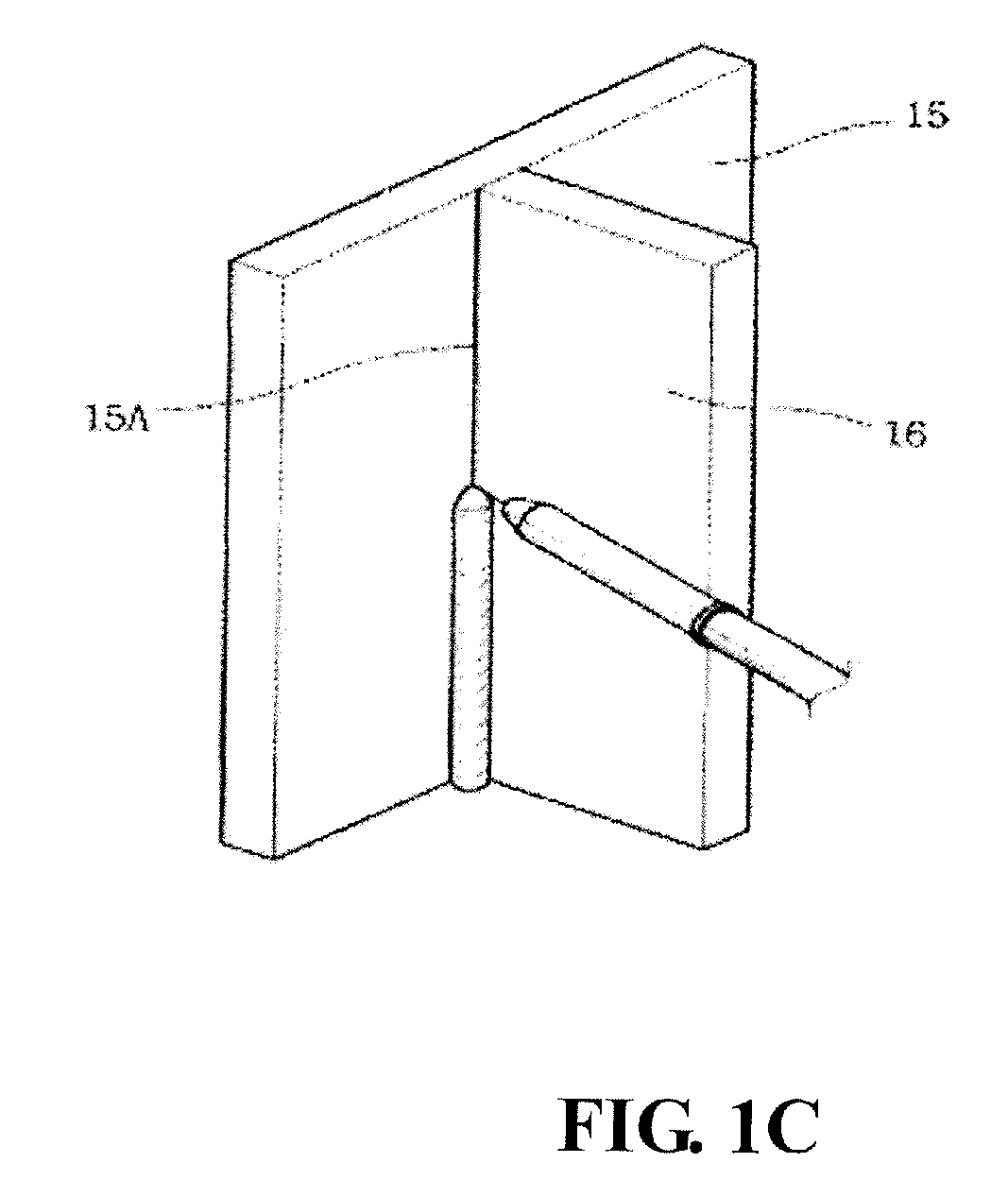Flux cored wire for duplex stainless steel and method of manufacturing the same
a technology of duplex stainless steel and cored wire, which is applied in the direction of manufacturing tools, welding/cutting media/materials, welding apparatus, etc., can solve the problems of reducing mechanical properties and corrosion resistance of the weld zone, poor welding performance and intragranular corrosion resistance, and difficult control of minute structure changes, etc., to achieve excellent pitting corrosion resistance, good welding performance, and high strength
- Summary
- Abstract
- Description
- Claims
- Application Information
AI Technical Summary
Benefits of technology
Problems solved by technology
Method used
Image
Examples
examples
[0077]Hereinafter, the effect of embodiments of the flux cored wire for duplex stainless steel will be described by comparing and Example of an embodiment of the present invention with Comparative examples.
[0078]
TABLE 1Chemical Components of Weld Base MetalChemical components of weld base metal (%)CSiMnPSCuNiCrMoNThe others0.0240.341.780.020.0060.155.722.530.12Fe andimpurities
[0079]
TABLE 2Welding ConditionsWelding conditionsWelding positionWelding inVerticalOverheadflat positionweldingweldingCurrent (A)190-210180190Voltage (V)27-292627Welding speed (cm / min)25-30727Welding heat input (kJ / cm)10.3-14.640.111.4Wire diameter (mm)1.21.21.2PolarityDCEPDCEPDCEPShielding gas100% CO2100% CO2100% CO2
[0080]
TABLE 3Welding ConditionsLength ofShielding gasCurrentVoltageprojectedFlow rateSpeed(A)(V)wire (mm)Type(l / min)(CPM)2003020100% CO22030
[0081]Table 1 shows the chemical composition of weld base metal for evaluating the flux cored wire for duplex stainless steel according to an embodiment of the...
PUM
| Property | Measurement | Unit |
|---|---|---|
| apparent density | aaaaa | aaaaa |
| pitting temperature | aaaaa | aaaaa |
| apparent density | aaaaa | aaaaa |
Abstract
Description
Claims
Application Information
 Login to View More
Login to View More - R&D
- Intellectual Property
- Life Sciences
- Materials
- Tech Scout
- Unparalleled Data Quality
- Higher Quality Content
- 60% Fewer Hallucinations
Browse by: Latest US Patents, China's latest patents, Technical Efficacy Thesaurus, Application Domain, Technology Topic, Popular Technical Reports.
© 2025 PatSnap. All rights reserved.Legal|Privacy policy|Modern Slavery Act Transparency Statement|Sitemap|About US| Contact US: help@patsnap.com



